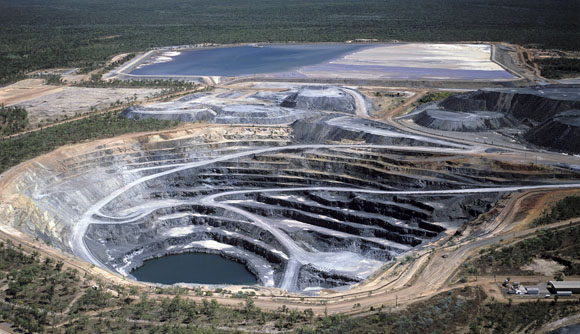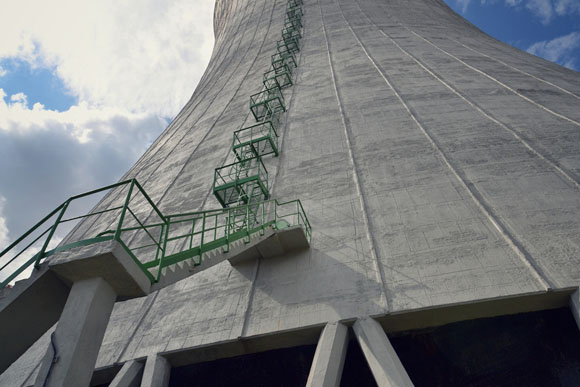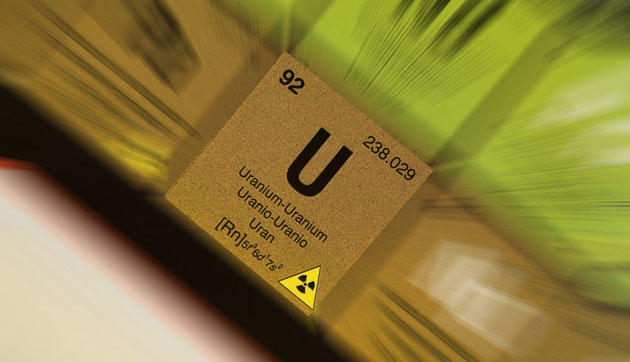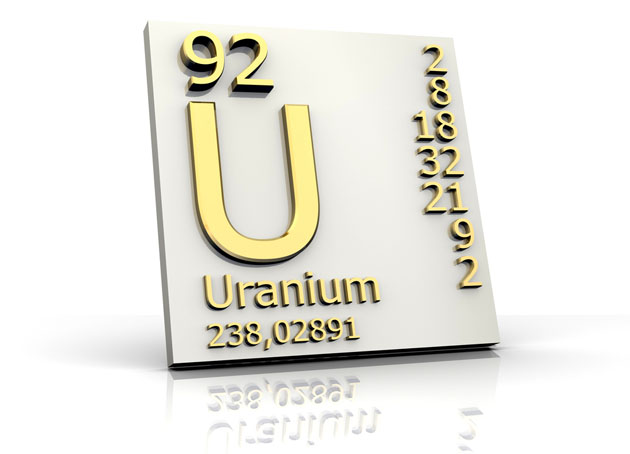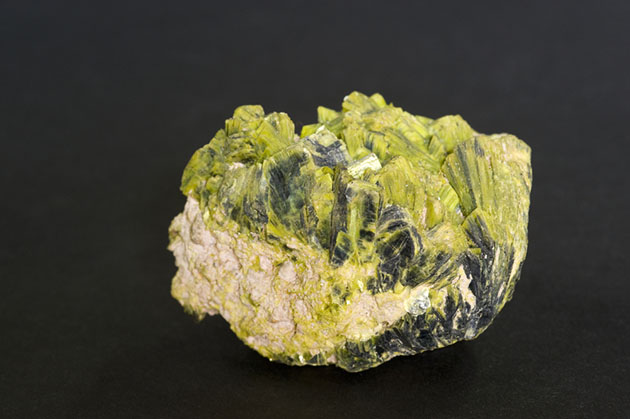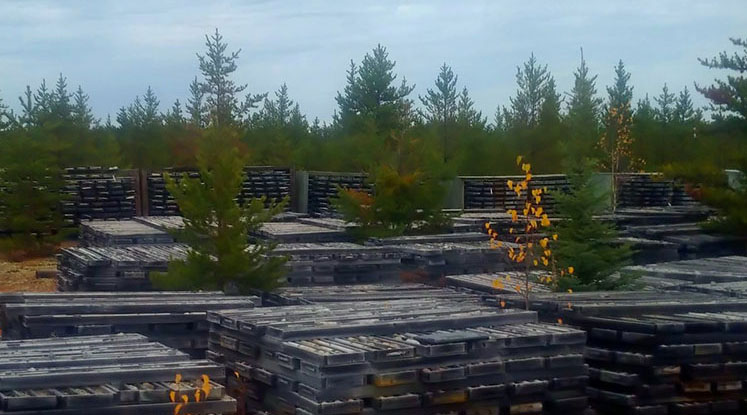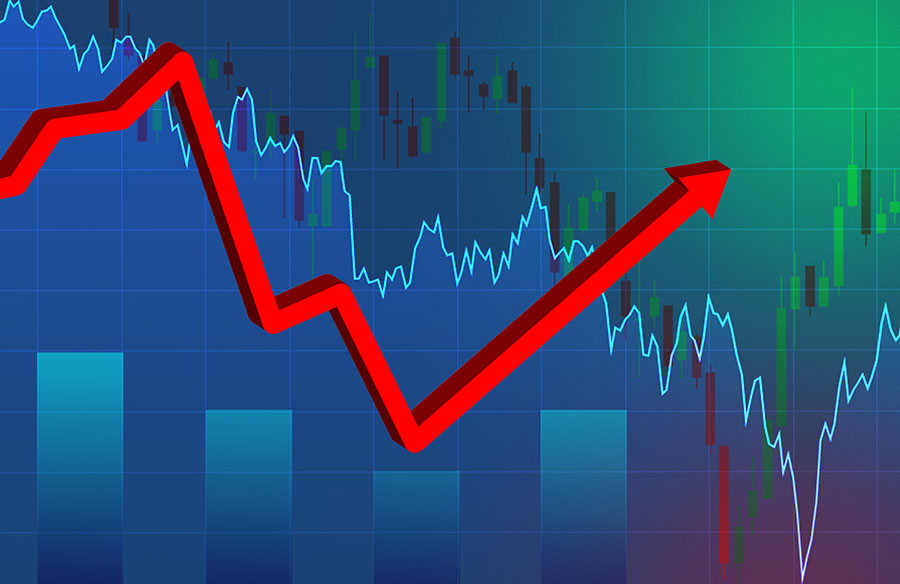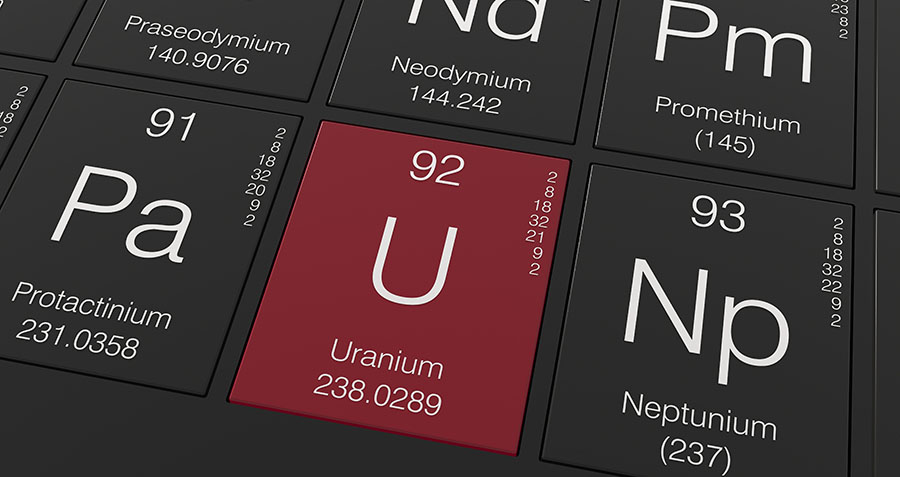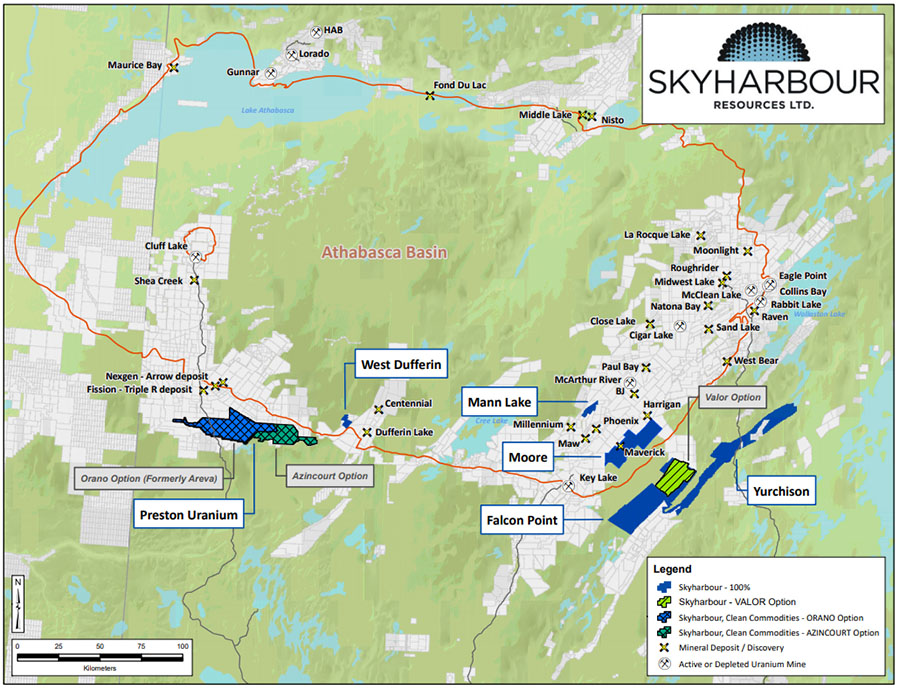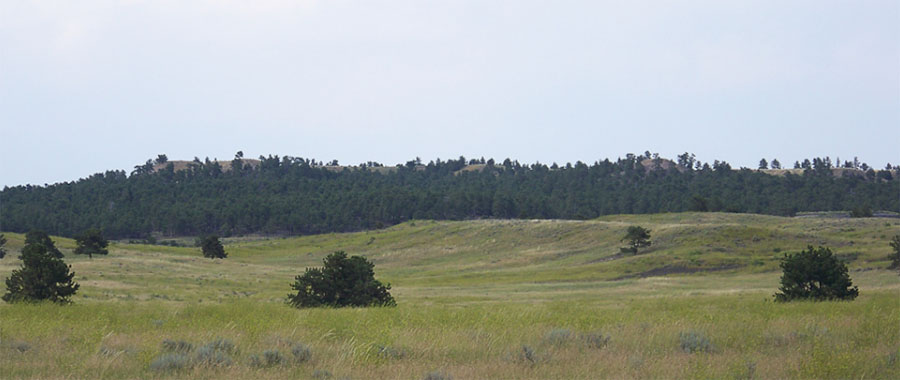The Energy Report: Surprisingly, Simon, you are predicting a shortfall in the international uranium supply over the next couple of years. Where does Japan fit in from your vantage point in Australia?
Simon Tonkin: With the Japanese reactors idle, people are concerned about what will happen to its idled reactor fuel stockpile. Not to worry: the Japanese material is stored in a different form than U3O8, and it is specifically configured for use in the Japanese reactors. Selling off the stockpile would require significant investment in down blending. We do not see a risk of Japan divesting its uranium stockpile in the near term. And by the time that might become an option, the Japanese reactors will certainly have restarted.
TER: Is China an increasingly important demand factor for uranium?
ST: China is securing supply all around the world because it plans to cap carbon emissions by 2030. Capping pollution will require replacing coal generation with nuclear energy reactors and renewable sources. Without a doubt, China is the most important factor driving demand—and that simple fact is reason enough to buy cheap stock in Australia-based uranium miners. However, investors need to be selective and cautious as there are numerous junior uranium companies that require further funding.
TER: Is there a disconnect between the price of the commodity and the equities?
ST: The uranium price has gone up 40% and is trading around the US$40 per pound (US$40/lb) mark. The equities have gone down 10%. The reason for that disparity is market sentiment. People do not believe that the price will continue to rise. Consequently, a lot of uranium companies are being starved of the capital to continue exploration and development. Now the Chinese are riding in with ready cash.
For example, the Chinese are circling Paladin Energy Ltd. (PDN:TSX; PDN:ASX) with China Investment Corporation (CIC) recently funding US$50 million (US$50M) in convertible notes, Chinese-related investment group HOPU Clean Energy taking a 15% stake in Paladin and China National Nuclear Corp. (CNNC) taking a 25% stake in Langer Heinrich. Paladin operates the Langer Heinrich uranium mine in Namibia, but its debt exposure is an issue with an estimated US$789M in debt and cash close to US$480M. A convertible note of US$300M is due to be repaid in November 2015, which should not be a problem. There is a second convertible note due in 2017 that could need further funding as Paladin is unprofitable at current uranium prices. We calculate between now and 2020, Paladin needs a uranium price of about US$60 to US$65/lb to pay back all of its current debt. As prices continue to stabilize, Paladin should return to profitability.
TER: How low can the price sink before the typical uranium company can no longer do business?
ST: A lot of companies, not just Paladin, are operating at a loss. But the uranium price appears to be stabilizing at US$40/lb. That will likely be the base price going forward. The key short-term catalyst is the Japanese reactor restarts. We should see a couple of them go back on-line by mid-year. With Chinese reactor builds being the key growth area for uranium demand, further announcements on additional reactor builds would be a key catalyst for the uranium market.
It is worth noting that the production from Kazakhstan, which significantly ramped up after 2007, has leveled off at about 22,000 tons. Kazakhstan may have peaked. That will be a quite positive situation from the supply side.
TER: Is the cost of production significantly lower in Kazakhstan than in North America?
ST: Kazakhstan is the world's largest producer of uranium and has a cost of production between US$20/lb and US$25/lb. In North America, in-situ recovery (ISR) operations range between US$25/lb and US$30/lb.
TER: What is the likely future of North American uranium production?
ST: The U.S. utilities are looking to secure uranium supply and they want that supply to be from politically safe jurisdictions, i.e., based in North America. The situation looks good for the well-known North American players: Ur-Energy Inc. (URG:NYSE.MKT; URE:TSX), Uranerz Energy Corp. (URZ:TSX; URZ:NYSE.MKT) and Energy Fuels Inc. (EFR:TSX; UUUU:NYSE.MKT; EFRFF:OTCQX). We cover a story in Wyoming called Peninsula Energy Ltd. (PEN:ASX).
Peninsula has benefited by signing offtake agreements that were priced well above the current spot price. We expect the company to sign more offtake agreements in the short term, which will increase its margin. Cash costs for Stage One of Peninsula's project in Wyoming are expected to be US$41/lb, reducing to US$31/lb in Stage Two. That project will enter production in late 2015 and is fully funded for Stage One with the company raising US$69M through major institutions, which include BlackRock, Resource Capital Fund, Pala and JP Morgan. Peninsula has a second project in South Africa, which could move into production in 2017–2018.
TER: Is there much of a cost of production differential between various mining techniques, i.e., in-situ leach, underground and open pit?
ST: Yes, there is a significant difference. For instance, Peninsula uses the in-situ recovery (ISR) method in Wyoming. In-situ mines are typically cheaper. Operating an in-situ mine is similar to operating an oil field: the firm drills wells, pumps down acid or alkaline and chemicals to leach the uranium, and then pumps the pregnant liquor back up to the surface.
Paladin's Langer Heinrich is open pit. Those operations tend to cost a bit more because the material must be crushed down, beneficiated and then leached, whereas ISR material is already in solution when it reaches the surface. The hardest task in any uranium operation is metallurgy, as sometimes the recoveries just are not as good as people had hoped.
Underground operations tend to be a lot higher grade—such as Cameco Corp.'s (CCO:TSX; CCJ:NYSE) MacArthur River and Cigar Lake mines. The richness of these ore bodies justifies the expense of going underground. In Australia, Energy Resources of Australia Ltd. (ERA:ASX) is looking at the Ranger 3 Deeps project. It is completing a prefeasibility study to transition the mine from open cut to underground. There's some media speculation that Energy Resources may not go ahead on that project because it needs an extension to its license and the economics for underground might not be there yet.
TER: Which companies do you like in Australia?
ST: I recently caught up with the managing director of Berkeley Resources Ltd. (BKY:ASX; BKY:AIM). Berkeley's offices are in Perth, but its flagship Salamanca project is located in Spain. Berkeley Resources has a resource base of 88 million pounds (88 Mlb) and recently released a prefeasibility study that confirmed a robust, low capex and opex project with significant scale and mine life. The study did not include the new potentially higher-grade Zona 7 resource, which has areas that are twice the grade of that used in the prefeasibility study. Berkeley Resources is shrewd and is timing production for when the uranium price is expected to increase beyond US$60/lb. The company has approximately US$13M in the bank—which is a lot more money than many uranium companies have on hand.
We like Anatolia Energy Corp. (AEK:ASX). It has the Temrezli ISR project in Turkey. This has a low capital cost of US$41M to reach production. Anatolia Energy has released a prefeasibility study showing an internal rate of return of 65% and a pre-tax net present value of US$191.1M, with cash costs of US$16.89/lb for a 12-year mine life. Temrezli is very attractive, provided that Anatolia gets its mining permits. It is targeting production for 2016. As Anatolia is the only uranium producer in Turkey, the central government is keen for the company to commence production.
We are big fans of Alligator Energy Ltd. (AGE:ASX) in the Northern Territory's high-grade uranium Alligator Rivers Province. Alligator is chasing 100 Mlb unconformity style uranium deposits, analogous to the world-class Ranger and Jabiluka deposits, that have grades in the range of 0.3% to 0.5% U3O8, which is high grade. We note there have been reported intersections of up to 3%. Alligator has discovered a new geophysical and geochemical way to explore for these types of large deposits and it is in the process of prioritizing targets for the upcoming drill season (July–November). A high-grade hit will significantly impact Alligator's share price. One of Alligator's directors and major investors under Macallum Group Ltd. is Peter McIntyre, who was involved with Extract Resources Ltd. (EXT:TSX; EXT:ASX) when it discovered the massive Husab uranium deposit in 2008–2007.
TER: What is the importance of grade in the market today?
ST: Grade is very important. At the current uranium prices anything below 500 parts per million (500 ppm) is marginal and will need to be upgraded. Paladin upgrades its ore to around 700–800 ppm (from around 500 ppm). Based on the long-term consensus view that uranium prices will need to increase to about US$75/lb, then grades down to 300 ppm may be feasible. The bottom line is that the better the grade, the more chance it will be developed.
Vimy Resources Ltd. (VMY:ASX) gave us a presentation recently on its Mulga Rock uranium project, which has 63.5 Mlb of uranium. Vimy Resources is ready to release an updated resource and scoping study shortly; its last study on the project was back in 2009–2010. The deposits are hosted within shallow, flat lying carbonaceous sediments, which is unusual. The resource grade is around 500 ppm, but the ore is amenable to simple gravity benefaction before processing. Andrew Forrest, the Australian iron ore magnate, has a large investment in Vimy Resources.
TER: Is Australia uniquely positioned to thrive in a resurgent uranium market?
ST: Australia possesses the largest uranium reserves and resources in the world. Unfortunately, the political landscape shapes uranium mining in Australia. The Labor Party, and especially the State Government Labor parties, have been traditionally opposed to uranium mining. The newly elected Labor Government of Queensland says it is going to ban uranium mining. That will affect Paladin, Laramide Resources Ltd. (LAM:TSX; LAM:ASX) and Mega Uranium Ltd. (MGA:TSX), which all have assets in Queensland. In New South Wales, the government has started to open doors to exploration, but only one out of the six companies asked to submit proposals for tenements actually applied. This gives you an idea of the lack of available capital for exploration.
In Western Australia, if the Labor Party wins the next election, it may again choose to ban uranium mining. On the positive side, Toro Energy Ltd. (TOE:ASX) has already obtained its mine license for Western Australia, so it should not be too impacted. Vimy is working hard to get its mining licenses before any potential change of government, which should not be until March 2017, at the earliest.
The Government of the Northern Territory has not banned uranium mining, however, the key to developing any project in the "top end" is to have a strong relationship with the Traditional Owners. Jabiluka is a 380 Mlb deposit, grading in the 0.5% range. That will not be mined anytime soon, unless industry can get the Traditional Owners on its side. Alligator Energy has a strong relationship with the Traditional Owners. The Traditional Owners' relationship with Energy Resources and Rio Tinto Plc (RIO:NYSE; RIO:ASX; RIO:LSE; RTPPF:OTCPK) is a complex one because those firms have a large rehabilitation cost to pay on the Ranger mine if they were to close it down. In addition, Energy Resources has to extend its license from 2021 to allow it to fully mine its Ranger 3 Deeps project. It will really need to work hard with the Traditional Owners to do that.
TER: If a state/territory bans uranium mining, what happens to firms with already approved mining licenses?
ST: It depends on the specific government legislation; historically a ban on uranium mining has meant that companies that are mining uranium are able to continue. However, explorers and developers are effectively shut out from obtaining a mining license.
TER: What companies do you like in Africa?
ST: A-Cap Resources Ltd. (ACB:ASX) has one of the world's largest undeveloped uranium deposits with a JORC resource of 308.1 Mlb of uranium contained within a higher-grade resource of 83.7 Mlb at 447 ppm. When we visited this project in Botswana, we thought it might be difficult, but A-Cap has since found the higher-grade area, which could potentially be a starter pit, so the project is looking more attractive, especially because the Chinese are roaming around this region of Africa.
Aura Energy Ltd. (AEE:ASX) has a 300 ppm deposit in Mauritania that it plans to beneficiate to above 2,000 ppm. If it can accomplish this feat, its deposit could be very attractive. It needs beneficiation because the project is isolated in the middle of Mauritania, so it needs to justify the expense of building out infrastructure.
TER: Are there other national capital formations besides China seeking uranium opportunities in Africa?
ST: The Russians and the French seem to have pulled out. I recently wrote a report called, "Namibia: Chinatown in the Making." At the moment, the Chinese have plenty to keep them busy at Husab. Husab is a critical project for the uranium market because it's supposed to produce 15 Mlb per annum. If that project does not come on stream, the Chinese may need additional material. This is possibly why they are circling Paladin. It is a truism that new uranium projects are very difficult to get off the ground. The uranium market always looks ahead, though. With the Japanese reactors and the Chinese builds, we may be able to get some positive momentum in uranium over the next couple of years.
TER: Thanks for your time, Simon.
 Simon Tonkin has broad experience in the stockbroking industry, where he has worked for the last 15 years as a resources analyst in both Australia and Canada. He currently is senior research analyst at Patersons Securities in Perth. A move to Canada in 2006 resulted in Tonkin achieving his U.S. analyst registration and covering the base metals and uranium industries in both the Canadian and U.S. markets. During his tenure in Canada he regularly appeared on the North American Business News Network (BNN) and contributed to numerous print articles. He returned to Australia in 2010. He has travelled to mine sites in more than 40 countries, such as Kazakhstan, Peru and Chile. Tonkin holds a Diploma of Applied Finance and Investment from Finsia specializing in the Company Analysis stream.
Simon Tonkin has broad experience in the stockbroking industry, where he has worked for the last 15 years as a resources analyst in both Australia and Canada. He currently is senior research analyst at Patersons Securities in Perth. A move to Canada in 2006 resulted in Tonkin achieving his U.S. analyst registration and covering the base metals and uranium industries in both the Canadian and U.S. markets. During his tenure in Canada he regularly appeared on the North American Business News Network (BNN) and contributed to numerous print articles. He returned to Australia in 2010. He has travelled to mine sites in more than 40 countries, such as Kazakhstan, Peru and Chile. Tonkin holds a Diploma of Applied Finance and Investment from Finsia specializing in the Company Analysis stream.
Want to read more Energy Report interviews like this? Sign up for our free e-newsletter, and you'll learn when new articles have been published. To see a list of recent interviews with industry analysts and commentators, visit our Interviews page.
DISCLOSURE:
1) Peter Byrne conducted this interview for Streetwise Reports LLC, publisher of The Gold Report, The Energy Report, The Life Sciences Report and The Mining Report, and provides services to Streetwise Reports as an independent contractor. He or his family own shares of the following companies mentioned in this interview: None.
2) The following companies mentioned in the interview are sponsors of Streetwise Reports: Uranerz Energy Corp. and Energy Fuels Inc. The companies mentioned in this interview were not involved in any aspect of the interview preparation or post-interview editing so the expert could speak independently about the sector. Streetwise Reports does not accept stock in exchange for its services.
3) Simon Tonkin: I own, or my family owns, shares of the following companies mentioned in this interview: Alligator Energy Ltd. I personally am, or my family is, paid by the following companies mentioned in this interview: None. My company has a financial relationship with the following companies mentioned in this interview: Peninsula Energy Ltd. I was not paid by Streetwise Reports for participating in this interview. Comments and opinions expressed are my own comments and opinions. I determined and had final say over which companies would be included in the interview based on my research, understanding of the sector and interview theme. I had the opportunity to review the interview for accuracy as of the date of the interview and am responsible for the content of the interview.
4) Interviews are edited for clarity. Streetwise Reports does not make editorial comments or change experts' statements without their consent.
5) The interview does not constitute investment advice. Each reader is encouraged to consult with his or her individual financial professional and any action a reader takes as a result of information presented here is his or her own responsibility. By opening this page, each reader accepts and agrees to Streetwise Reports' terms of use and full legal disclaimer.
6) From time to time, Streetwise Reports LLC and its directors, officers, employees or members of their families, as well as persons interviewed for articles and interviews on the site, may have a long or short position in securities mentioned. Directors, officers, employees or members of their families are prohibited from making purchases and/or sales of those securities in the open market or otherwise during the up-to-four-week interval from the time of the interview until after it publishes.


